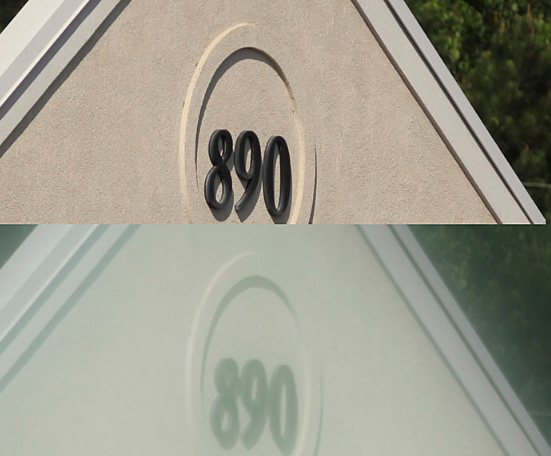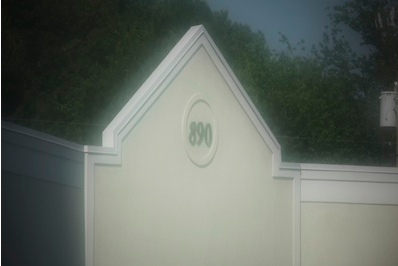- Home
- Photoshop ecosystem
- Discussions
- Re: How to reduce the size of PSD files
- Re: How to reduce the size of PSD files
How to reduce the size of PSD files
Copy link to clipboard
Copied
I heard a neat trick today to reduce the size of .psd files. It works best with very big 8 bit files (not sure if it works with 16bit) but even with small files appears to give a 10% reduction in file size. It's dead simple create a new layer at the top of the layer stack and fill it with white, keep the white layer visible so the rest of the image is obscured then just save under a different name. Now compare the two files and you should see a file size reduction.
All credit to Aaron Nace for this who gave a brilliant live Q&A on Phlearn.com this afternoon.
Explore related tutorials & articles
Copy link to clipboard
Copied
That sound like it would only reduce the files size by reducing the data required for the composite view saved. That new layer would require little data as would the full composite view. Of course programs like Lightroom would only see white for they do not not support layers just uses the psd composite saved in the psd. If something is generating thumbnails for your PSD file all your thumbnails will most likely be white.
Copy link to clipboard
Copied
For many of us, that would defeat the purpose of thumbnails as a quick visual cue when working at the Finder or Windows Explorer level, and even Bridge. With storage costing much less these days (I just installed a $99 Crucial 524 GB SSD in my Macbook Pro) it wouldn't make that much difference to make it worth looking at white squares.
Another way of reducing the size of PSDs is to set "Maximize PSD/PSB compatibility to "Never" and in a 80 MB file, it drops 10 MB by leaving out the composite image and you can still see the thumbnail image.
But as they say, "Live your life".
Copy link to clipboard
Copied
Or you can just use zip compressed tiffs. Really, who actually uses psd files anymore anyway. The zip compression in tiffs is more effective that the compression (RLE I think) in psd files. Unless you're saving a duotone, there's little reason to use psd anymore.
Copy link to clipboard
Copied
SasquatchPatch wrote:
there's little reason to use psd anymore.
You could go one step more there is little reason to use PSD or Tiff. One is limited to 2GB the other to 4GB use PSB all the time no file size limit and adobe choice for recovery files and smart object work files. Photoshop native file type. I'll use PSD so I know its less than 2GB my layered work. PSB for layered file over 2GB. Tiff could come from anywhere and be flat or layered. PSD is the file type to save layered work. IMO
Copy link to clipboard
Copied
SasquatchPatch wrote:
Or you can just use zip compressed tiffs. Really, who actually uses psd files anymore anyway. The zip compression in tiffs is more effective that the compression (RLE I think) in psd files. Unless you're saving a duotone, there's little reason to use psd anymore.
We've had a few conversations about it here over the years, with input from Chris Cox, Jeff Schewe etc. This LL thread dates back to 2007 with JS coming down in favour if TIF. I personally prefer PSD and PSB because size is not an issue, but speed is, and we can disable compression for psd files in Preferences. I also keep backward compatibility set to Always so that I don't forget when doing Displacement Maps.
BTW I didn't know about the white layer trick, but I just tested and it seems to work with any solid colour at the top of the stack, giving me 81Mb against 91Mb.
Copy link to clipboard
Copied
PSD/PSB here. I tend to keep to the native formats for any program. Less to think about.
(Got a Macbook Pro, so I can expect to lose more brain cells. ![]() )
)
Gene
Copy link to clipboard
Copied
When Aaron Nace demonstrated this trick yesterday he used a gigantic 1.7GB PSD he had retouched and with the addition of the upper layer it shrank by 400MB. It's true you lose the thumbnail preview but if you wanted to upload that file somewhere it would save a lot of time and also it would be fairly easy to write a script to turn that blank obscuring layer off as the file loads into Photoshop so it behaved like any other image.
I don't know if your interested guys but Aaron is doing a live stream of a real photoshoot from his Chicago studio next week. As a designer rather than a photographer I don't know much about light boxes or reflectors or photography in general, I have just realised you need to take the lens cap off before taking a picture lol I don't think there is a finalized date yet, but I'll try and find out and post back here.
Copy link to clipboard
Copied
Terri Stevens wrote:
you need to take the lens cap off before taking a picture
Lens caps? I hate fiddling with that. I put a glass filter on and let that take the beating.
Which reminds me. You've all seen the tourists with huge 70-200 zooms dangling on their bellies? And how they all have the lens hood permanently attached, in the reversed (flipped back) position where it serves absolutely zero purpose? Do they ever wonder what it's for...? ![]()
![]()
Copy link to clipboard
Copied
https://forums.adobe.com/people/D+Fosse wrote
Terri Stevens wrote:
you need to take the lens cap off before taking a picture
Lens caps? I hate fiddling with that. I put a glass filter on and let that take the beating.
Which reminds me. You've all seen the tourists with huge 70-200 zooms dangling on their bellies? And how they all have the lens hood permanently attached, in the reversed (flipped back) position where it serves absolutely zero purpose? Do they ever wonder what it's for...?
I found this old thread while looking for PSD vs TIFF threads.
A few days ago a local PJ buddy bought his (the paper's) camera round for me to clean the sensor. My tool kit contains an Arctic Butterfly static brush, Pec Pads and Elipse Fluid (two types), and my magic weapon which is 7X illuminated loupe. It got to where I couldn't anything on the sensor, but he was still some significant spots at F22, so I asked if I could have a look, and found that the lens protecting filter had potatoes growing on it — or could have done. I used a discarded Pec Pad and Elipse fluid to clean the filter, and all was well. The lens was a Canon 24-70mm F2.8L (the original version).
Many years ago I had a Canon 24-105mm F4.0 which had a tiny scratch on the front element. You couldn't see it even at F22, but I always thought it an unsatisfying lens to use. Especially into the light where it had a tendency to flare, but I never really liked that lens, even before it got the scratch.
The lens rental guys did a tongue in cheek test some years ago, stacking up a crazy number of front filters,

Exaggeration is a good way to make a point, and the point is clear judging by the with and without 50 filters images.

A wider view shows there is also a halo effect.

So if you are going to use a filter on your top quality lens, use a good one, and keep it clean. I personally don't use filters for lens protection, but _always_ have the lens hood fitted when the lens cap is off.
Note: Arctic Butterfly static brushes are great, but ridiculously over priced. I paid NZ$200 for mine, but I suspect this $30 item on Amazon would do exactly the same job. I managed to drag grease from the mirror hinge, across the sensor on my one week old $13,000 1DsMK3 about ten years old, so keep them away from mirror hinges.
My loupe was also a Visible Dust (who make the Arctic Butterfly) item, and similarly overpriced at around the US$100 mark, but here again, I suspect that this $20 item from AliExpress would do the job.
There used to be two versions of Eclipse fluid, but the E2 is now discontinued, which I guess means that the original version was always OK for all sensor types. The E2 apparently takes too long to evaporate, but I usually use a second, dry, Pec Pad to polish after a wet clean of the sensor. I think I have three bottles of the stuff due to a repeat order. Never mind. The local photographers come to me for sensor cleans, and I get the occasional bottle of wine out of it.
Copy link to clipboard
Copied
PSD here as well - I just started with that and haven't seen any pressing reason to switch. It could just as well have been TIFF, but why?
One argument could be widespread platform-independent support, but with master files full of layers, smart objects, masks and all kinds of things that are only supported in Photoshop anyway...I wouldn't even want my masters to be at all readable anywhere else.
And when the disk fills up, get another one.
Copy link to clipboard
Copied
What would life be without wine?
Find more inspiration, events, and resources on the new Adobe Community
Explore Now

